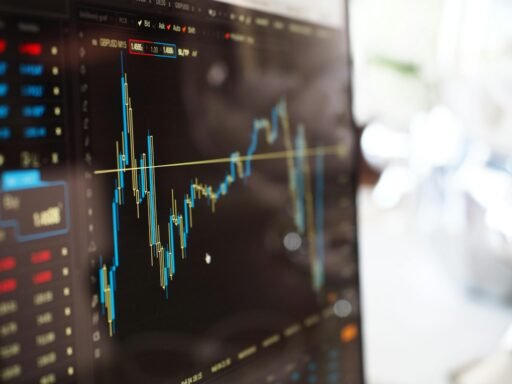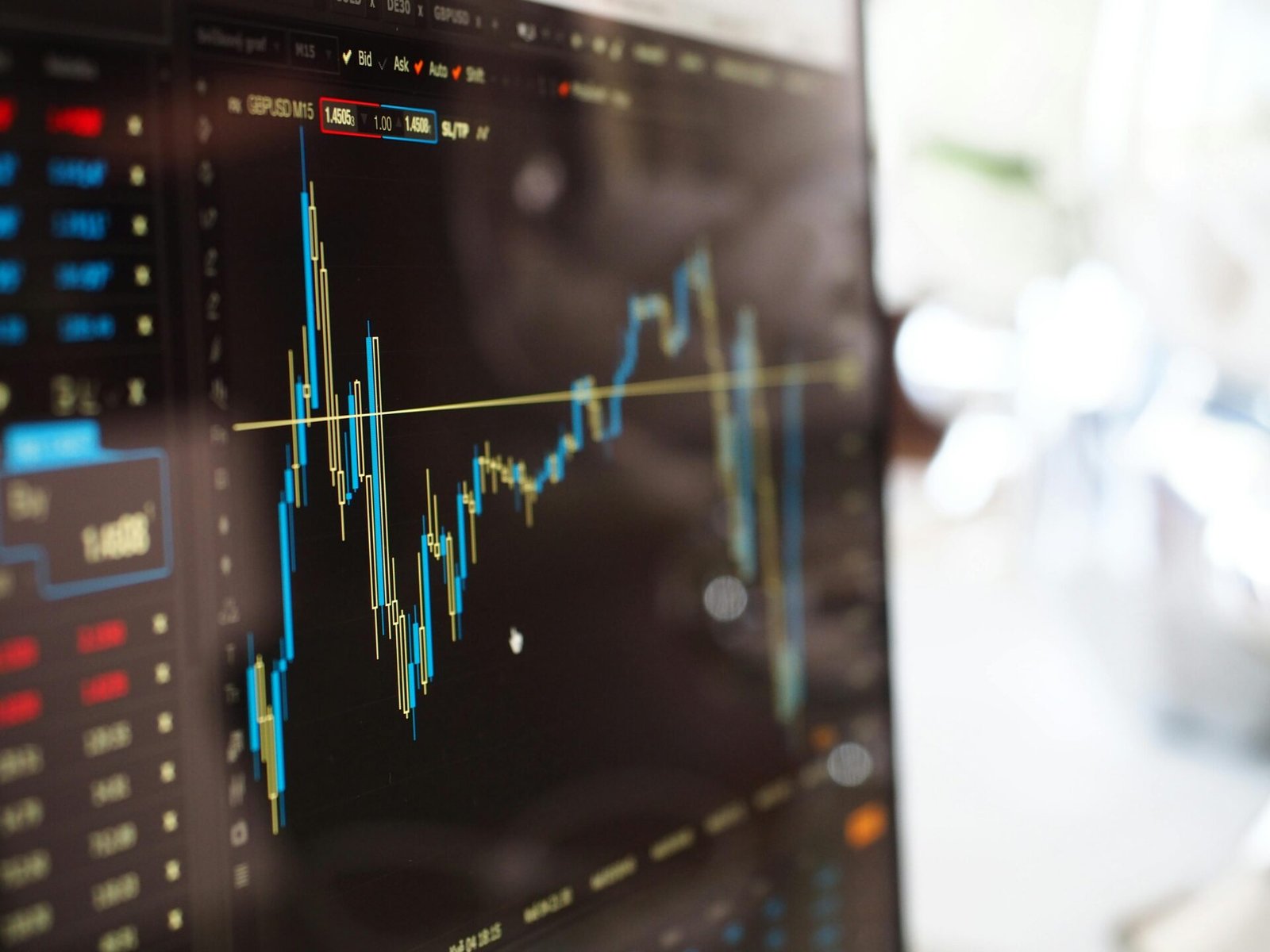Cryptocurrency trading is often painted as a world entirely separate from traditional financial markets. People love to talk about Bitcoin as “digital gold” or Ethereum as the backbone of Web3, as if these assets exist in some kind of vacuum. But here’s the truth: crypto doesn’t operate on an island. It’s deeply influenced by what’s happening in traditional finance. Stocks, commodities, bonds, and even currencies all leave fingerprints on the crypto market. If you’re serious about trading or investing, understanding these connections can give you a serious edge.
Let’s break this down. Imagine trying to predict the weather without checking the sky. Sounds ridiculous, right? That’s what it’s like trading crypto without paying attention to traditional markets. The broader financial ecosystem often sets the tone for risk appetite, liquidity, and capital flows, and ignoring these signals is like flying blind. So, how can we use cross-market analysis to anticipate crypto trends? Let’s dive into the key relationships, metrics, and strategies that can help you stay ahead of the curve.
The Ripple Effect: Why Traditional Markets Matter
It’s easy to think of Bitcoin as a rebel asset, uncorrelated with anything else. For a while, that narrative held some truth. But as institutional money poured into crypto, the game changed. Big players like hedge funds and asset managers don’t just trade crypto in isolation—they treat it as part of a broader portfolio. When equity markets tank or bond yields spike, you can bet those same institutions are adjusting their crypto positions too.
Take the S&P 500, for instance. When investors feel confident about the economy, they tend to pour money into riskier assets, including altcoins and tokens. On the flip side, when fear takes over—whether it’s due to inflation, geopolitical tensions, or a banking crisis—crypto often gets caught in the downdraft. Even if Bitcoin was designed to be a hedge against traditional financial instability, in practice, it often trades like a high-beta tech stock.
But it’s not just equities. Commodities like gold and oil also play a role. Gold, often seen as a safe haven, tends to rally during periods of uncertainty. If you notice gold spiking while crypto is selling off, that’s a signal investors are fleeing risk. Oil prices, meanwhile, influence inflation expectations, which in turn impact central bank policy. And as we’ll discuss, central banks hold the keys to liquidity—arguably the most important driver of crypto prices.
Interest Rates and Liquidity: The Fed’s Shadow Over Crypto
If you only pay attention to one traditional market indicator, make it interest rates. Central banks, particularly the Federal Reserve, wield enormous influence over global liquidity. When rates are low, borrowing is cheap, and money flows freely into riskier investments, including cryptocurrencies. Conversely, when rates rise, capital becomes more expensive, and speculative assets often take a hit.
Think back to 2020. The Fed slashed rates to near zero and unleashed massive quantitative easing in response to the pandemic. That flood of liquidity didn’t just boost stocks—it fueled an epic bull run in crypto. Bitcoin surged from under $10,000 to nearly $70,000, while altcoins like Solana and Avalanche delivered life-changing gains. But when inflation reared its head in 2022, the Fed flipped the script. Rate hikes sucked liquidity out of the system, and crypto markets cratered.
Here’s the kicker: it’s not just the Fed. Other central banks, from the European Central Bank to the Bank of Japan, also play a role. Even if you’re trading Bitcoin, which is theoretically global and decentralized, U.S. monetary policy often sets the tone. Keep an eye on rate decisions, inflation data, and bond yields—they’re like a cheat code for understanding market sentiment.
The Dollar’s Dance: How Currencies Impact Crypto
Another overlooked factor is the U.S. dollar. As the world’s reserve currency, the dollar’s strength or weakness has ripple effects across all asset classes, including crypto. A rising dollar often signals risk aversion, as investors flock to safety. This tends to weigh on Bitcoin and altcoins, which are seen as more speculative. Conversely, a weaker dollar can boost crypto, as it makes non-dollar assets more attractive.
One metric to watch is the DXY, an index that measures the dollar against a basket of other major currencies. When the DXY is climbing, it’s usually bad news for crypto. But if you see the DXY rolling over, that could be a green light for Bitcoin bulls.
It’s also worth considering how other currencies play into the mix. For example, when the Chinese yuan weakens, it can trigger capital flight into Bitcoin, as Chinese investors look for ways to preserve wealth. Similarly, emerging market currencies often correlate with crypto flows, particularly during periods of economic instability.
Stock Market Signals: Tech Stocks and Beyond
As mentioned earlier, Bitcoin and Ethereum often trade like tech stocks. This makes sense when you consider their investor base. Many crypto traders are also tech enthusiasts or venture capitalists, and their portfolios often include both. When tech stocks are rallying, it’s a good bet that crypto isn’t far behind.
But don’t just look at the Nasdaq or FAANG stocks. Broader equity market trends matter too. The S&P 500’s performance can offer clues about overall risk appetite. If you notice a divergence—say, stocks are climbing but Bitcoin is lagging—that’s a signal something’s off. Maybe it’s regulatory news, or perhaps crypto-specific liquidity is drying up. Either way, divergences are worth investigating.
Commodities and Inflation: The Hidden Drivers
We touched on gold and oil earlier, but let’s dig deeper. Commodities are often leading indicators of inflation, which in turn shapes central bank policy. Rising oil prices, for example, can stoke inflation fears, prompting rate hikes that weigh on crypto. Conversely, falling commodity prices can ease inflation concerns, creating a more favorable environment for digital assets.
Gold is another interesting case. While Bitcoin is often called “digital gold,” the two don’t always move in tandem. In fact, they sometimes trade inversely. When gold is surging, it’s often a sign of risk aversion, which can hurt crypto. But during periods of monetary easing, both assets can rally together.
Correlation Isn’t Causation: The Importance of Context
Before you start drawing lines on charts and making bold predictions, remember this: correlation isn’t causation. Just because two assets move together doesn’t mean one is driving the other. Always consider the broader context. Are both markets reacting to the same macroeconomic event? Is one leading the other, or are they simply moving in parallel?
For example, during the early stages of the pandemic, both stocks and crypto rallied as central banks flooded the system with liquidity. But their paths diverged in 2022, as rising rates hit tech stocks and crypto harder than other sectors. Understanding these nuances is key to effective cross-market analysis.
Practical Tools and Strategies
So, how do you actually apply this knowledge? Here are a few practical tips:
- Follow the Data: Keep an eye on economic indicators like GDP growth, inflation, and unemployment. These metrics shape central bank policy, which in turn impacts liquidity and risk appetite.
- Watch the Charts: Use tools like TradingView to overlay crypto prices with traditional market indicators. Look for correlations, divergences, and trend reversals.
- Stay Informed: Follow financial news outlets, central bank announcements, and earnings reports. The more you understand the macro landscape, the better equipped you’ll be to anticipate market moves.
- Diversify Your Analysis: Don’t rely on a single indicator or market. Combine multiple data points to get a more comprehensive view.
- Be Flexible: Markets are dynamic, and relationships change over time. What worked last year might not work today. Stay adaptable and open-minded.
Final Thoughts
Crypto trading isn’t just about understanding blockchain technology or reading whitepapers. It’s about seeing the bigger picture. Traditional markets provide a wealth of information that can help you navigate the volatile world of digital assets. By mastering cross-market analysis, you’ll not only improve your trading performance but also gain a deeper appreciation for the interconnectedness of global finance.
So, the next time you’re tempted to dismiss traditional markets as irrelevant to crypto, think again. Whether it’s the Fed, the dollar, or the S&P 500, these forces are shaping the crypto market in ways that are impossible to ignore. Embrace the complexity, do your homework, and you’ll be better prepared to thrive in this ever-evolving space.




